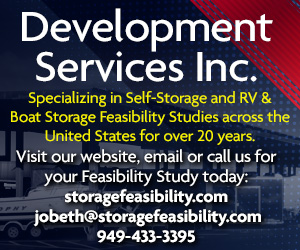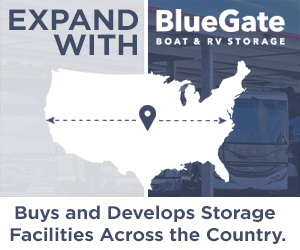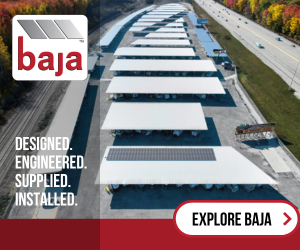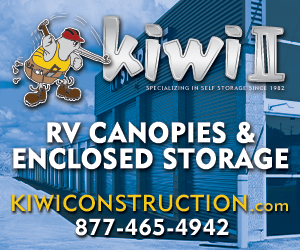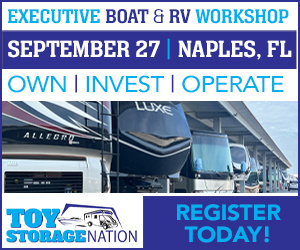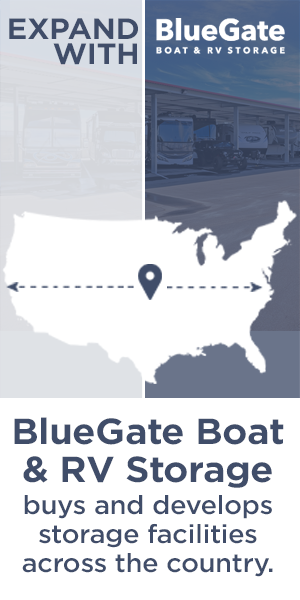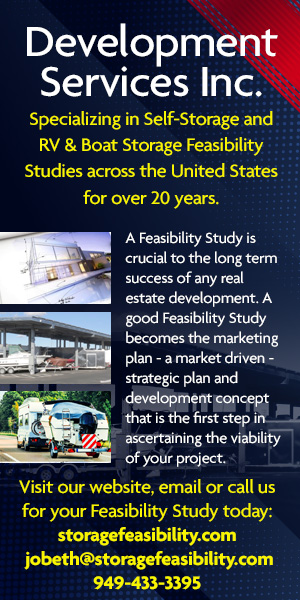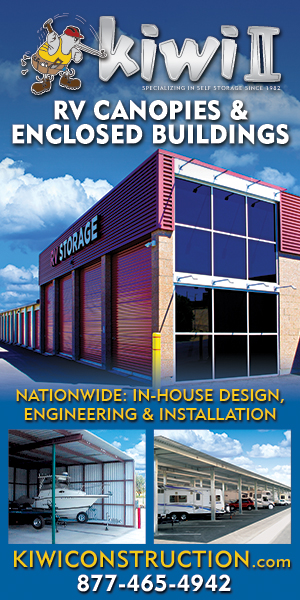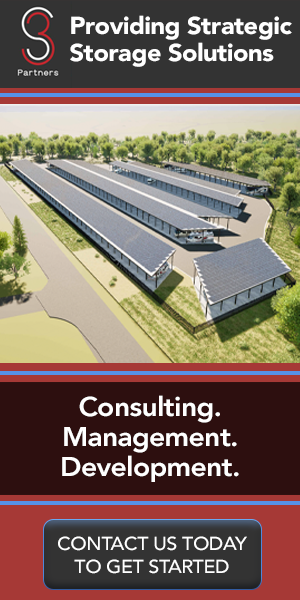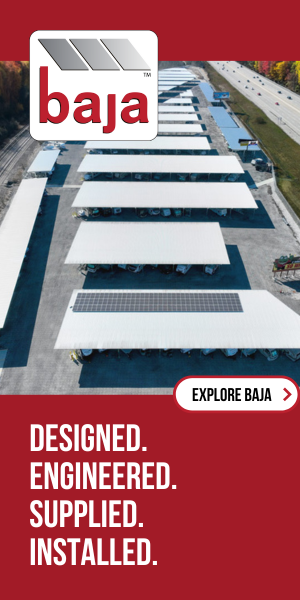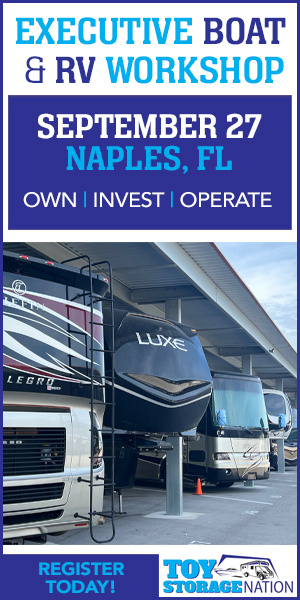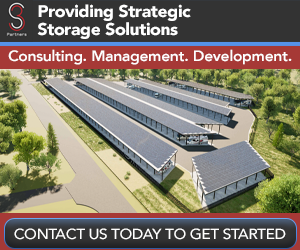By Storable
As the RV craze continues, some investors may be wondering whether to build an RV storage facility and how to build one. Unlike traditional self-storage facilities, RV and boat storage facilities typically require more storage space and take up more land.
But toy storage facilities also might be more lucrative than traditional self-storage facilities.
Costs and considerations
Mako Steel, which designs, supplies and installs self-storage buildings, says you should plan on needing at least 300,000 square feet of space to accommodate RV and boat storage, parking and other buildings. This compares with roughly 46,000 net rentable square feet for a typical self-storage facility.
In addition, an RV and boat storage facility usually demands more land than a typical self-storage facility does. While a typical storage facility covers about 2.5 to 5 acres, a toy storage facility can easily consume 7 to 10 acres. This could mean higher land costs.
The space and land factors should be key parts of your equation when you’re figuring out whether RV and boat storage could be a lucrative venture. The cost to develop a facility runs into the millions of dollars.
Trachte Building Systems, which provides products for self-storage owners and developers, suggests looking at whether you might opt to add RV and boat storage units to a traditional self-storage property. However, the company says, premium locations may be too pricey for large RV units or too small to allow enough large RV units.
Zero-in on the location
Not just any piece of land will do the trick when it comes to building an RV storage facility.
Mako Steel advises that open space near campgrounds, lakes and rivers are ideal spots for RV storage facilities. That, however, should not be the only thing that determines the location.
You also must study the demographics of the area surrounding a potential RV storage site. Do a lot of current or potential RV owners live close to the property? According to the RV Industry Association, the average RV owner is a married 48-year-old homeowner with an annual household income of $62,000. Given that profile, a site close to a cluster of apartment complexes might not work.
“Location really does make or break your storage business. The construction costs won’t pay off if you don’t have enough regular long-term renters,” Mako Steel advises.
Furthermore, you’ll want to consider the zoning regulations for a site you’re looking at. If the land isn’t already zoned for storage, you may face several costly, time-consuming hurdles when you try to rezone the property.
Concentrate on facility configuration
If you’re building an RV and boat storage facility, you must settle on the layout of the facility. First and foremost, you need to decide whether you are building indoor RV storage or outdoor RV storage. More than likely you’ll want a mix of both.
In many cases, tenants will be hunting for enclosed space to store their RVs. Why? Because enclosed spaces provide more security and weather protection than open spaces or canopy-covered spaces do, Mako Steel points out. That being said, you might want to include open spaces or canopy-covered spaces in the mix when planning your RV storage lot layout.
The Parham Group, which specializes in self-storage management, construction and consulting, says the minimum width of an RV storage unit typically is 12 feet, with a maximum depth of 45 to 50 feet. A common unit might be 14 feet wide and 40 feet deep. According to the Parham Group, a 14×40 unit would take up 560 square feet of land.
In addition, you’ll want to closely examine how tenants will enter and exit the property. You might wind up having to collaborate with local officials to ensure there’s enough room for RVs and trailers to navigate the entrances and exits. Also, as Mako Steel notes, you’ll need to see whether adjacent streets can easily handle RV traffic.
Focus on security
Typically, an RV costs anywhere from $35,000 to $300,000. Given those price tags, RV owners want to safeguard their investments. This means you must take security measures into account when building an RV and boat storage facility.
The Parham Group says you’ll at least want to install perimeter fencing, which can be chain link fencing, razor wire fencing or even solid block walls. You also should consider 24-hour secured access, complete with camera surveillance and key-coded entry gates.
Figure out amenities
Aside from security, potential tenants will be interested in amenities. For instance, RV and owners likely will want access to free water and to metered or flat-fee electricity, according to the Parham Group. Consider what amenities your customers will want when developing your RV and boat storage business model.
Once your RV storage facility is up and running, Storable technology can help you manage your business more efficiently. With marketing tools, websites, management software, insurance, and payment processing, Storable offers a whole suite of powerful products that will give your RV storage facility a competitive edge in a growing segment of the industry.











